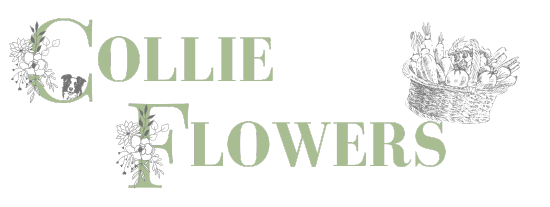From Heirlooms to Hybrids: understanding the types of seed that will help grow your dream garden
Seeds of Success: Decoding Open-Pollinated, Hybrid, and Heirloom Seeds
With time on my hands this week to complete our stock check and get ready for our latest introductions hitting the website, I've found my mind wandering to the different types of seeds availably to us, and how perhaps not everyone has the same understanding when it comes to the differences between open-pollinated, hybrids and heirlooms. Because I know a lot of people will look down on hybrids as being bad things, created in a lab, but they're not, most heirlooms were hybrids that by luck became stable, but not all open pollinated seeds are heirloooms, so come on let's take a dive into what it all means.
With so much interest in where our food comes from, it’s no wonder that us gardeners are looking to trace our seeds back to their sources. Many of us want to know exactly where the seeds we buy come from, what type they’re getting, and what it all means for the garden. Whether it’s open-pollinated, hybrid, or heirloom, each type of seed brings something different to the table. But what’s the real difference, and how do we choose?
Open-Pollinated Seeds
Open-pollinated seeds come from plants pollinated naturally—by bees, birds, bats, wind, and rain. This results in plants that grow and reproduce year after year, often adapting well to local growing conditions. Some open-pollinated plants are self-pollinating, meaning they have “perfect” flowers with both pistil and stigma, which pollinate themselves simply by blooming. Many others rely on pollinators or gentle help from gardeners to ensure proper pollination.
The beauty of open-pollinated seeds is that they “breed true.” When you save seeds from a plant grown with open-pollinated seeds, it will grow plants with similar characteristics in future seasons. The traditional technique of selecting the best plants and saving their seeds has been used since the dawn of agriculture, with farmers choosing traits like flavour, hardiness, and size to improve their crops. This ancient practice is possible only with open-pollinated plants, which makes them a mainstay in the world of seed saving and biodiversity.
Hybrid Seeds
Hybrids have a mixed reputation among gardeners, with some seeing them as lab-produced frankensteins. In reality, hybrids are simply the result of crossing two compatible plants, usually to combine specific desirable traits—like disease resistance, larger yields, or improved flavour. This process isn’t a matter of high-tech genetic modification; rather, it’s a natural form of crossbreeding that takes place with a little help from humans.
Many hybrid seeds are labelled with “F1,” meaning they are first-generation hybrids, created by crossing two specific parent plants to achieve a particular combination of characteristics. While hybrids have many benefits, they don’t breed true in subsequent generations. If you save seeds from a hybrid, the resulting plants won’t reliably reproduce the original hybrid’s traits. They’ll instead display a mix of traits, often resembling one or both of the parent plants.
But hybrids aren’t all F1. As hybrids are grown over generations (designated F2, F3, and so on), they can stabilise if a gardener selects seeds from plants that consistently display desirable traits. Eventually, after many generations, a hybrid variety may stabilise to the point where it “breeds true.” At this stage, the plant has been stabilised enough to become an open-pollinated variety, meaning gardeners can save seeds that reliably produce the same characteristics year after year. Some popular open-pollinated varieties actually began as hybrids before stabilising into new varieties.
Heirloom Seeds
Heirlooms are open-pollinated varieties that have been passed down through generations, often with rich histories and stories attached to them. To qualify as heirloom, a variety typically needs to be at least 40 years old and to have been maintained over the years through natural selection often originating from hybridisation. Heirloom plants often bring out the best flavours, unique appearances, and hardy traits that have stood the test of time.
Heirlooms are often organically grown, as many were established before the advent of synthetic pesticides and fertilisers. However, it’s worth noting that an heirloom label doesn’t guarantee organic status, as it’s more a reflection of the seed’s history and heritage. For seeds grown under strictly organic practices, look for organic labelling.
Choosing the Right Seed
So, which type of seed should you choose? It depends on what you’re after. For productivity, disease resistance, or uniformity, hybrid seeds can be a brilliant choice, offering many desirable traits.
Ultimately, I’m happy to grow and stock both open-pollinated and hybrid seeds, always selecting the best type for each planting project or that I believe will give you the best chance of success in your gardens. Gardening, after all, is about embracing diversity, making wise choices, and allowing our plants to thrive in their own unique ways.
